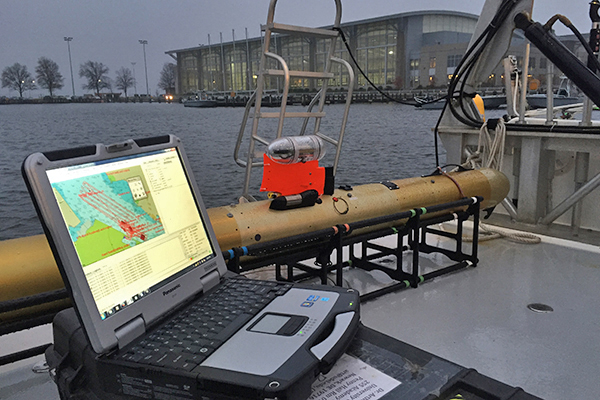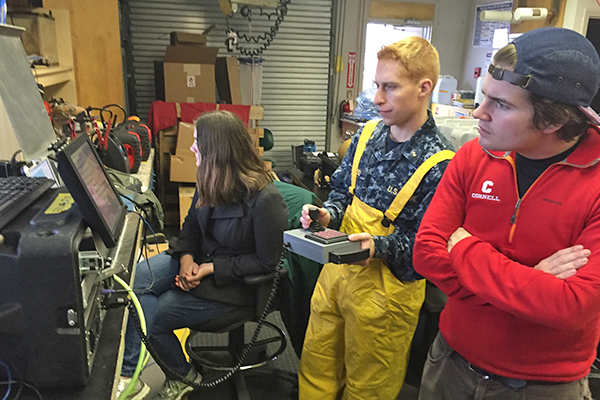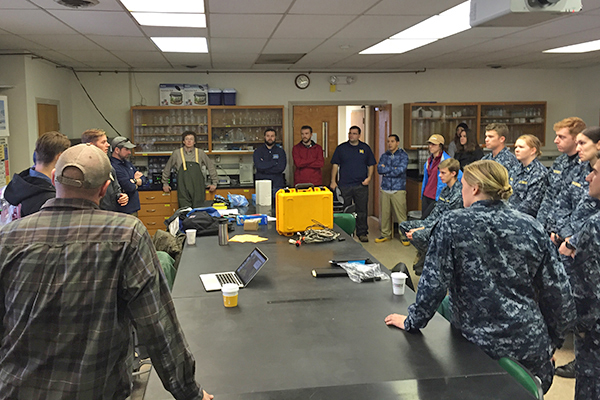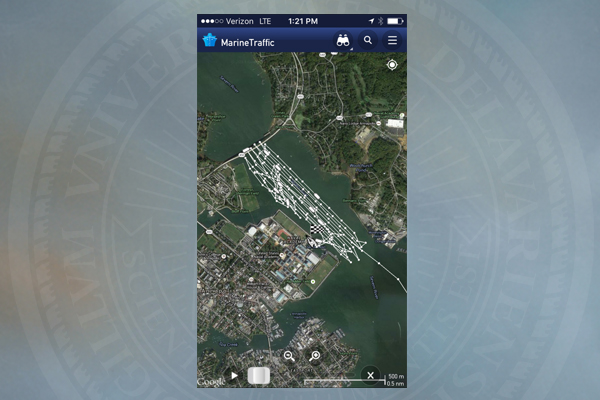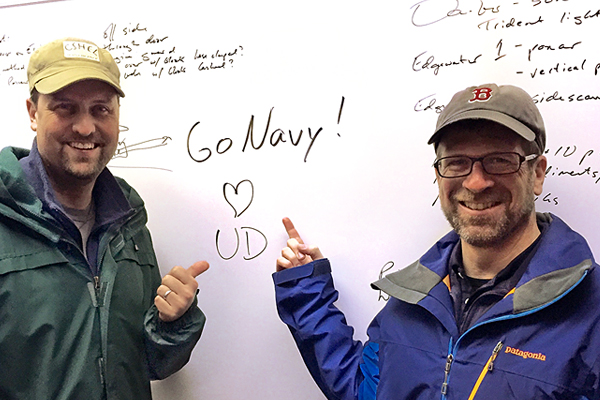Naval Academy fieldwork
UD grad students lead fieldwork, mapping exercise for Naval Academy midshipmen
9:32 a.m., Jan. 26, 2016--The University of Delaware associate professor Art Trembanis believes in putting his students in the driver’s seat.
So last fall, when the opportunity presented itself for graduate students in his MAST667 Advanced Coastal Mapping course to lead a training exercise for midshipmen at the U.S. Naval Academy (USNA), Trembanis was all over it.
Campus Stories
From graduates, faculty
Doctoral hooding
“I commissioned my students as scientists and engineers and tasked them with planning, coordinating and executing a field excursion to survey the Severn River adjacent to the Naval Academy in Annapolis,” he explained.
The USNA survey was a collaborative effort between Trembanis, Mark Moline, director of the School of Marine Science and Policy at UD, and Joe Smith, an assistant professor of oceanography at the Naval Academy.
Trembanis and his students spent a full day showing 15-20 Naval Academy midshipmen how to use autonomous underwater vehicle (AUV) technologies to map the bathymetry and sediment texture composition of Severn River from aboard UD’s newest research vessel, the R/V Joanne Daiber.
UD graduate students in Trembanis’ course led the fieldwork, while the Naval Academy’s midshipmen helped assemble the AUV and remotely operated vehicles (ROVs), plan missions and operate the equipment.
UD graduate student Ken Haulsee served as chief scientist and directed the survey. The students captured the baseline shape of the Severn River at a resolution of several inches, meaning they could visualize anything bigger than a coffee can, which allowed them to identify the location of the channel, areas where the river was sandy or muddy, or had holes, scour marks, even oysters.
“Planning a multi-platform survey where an AUV, ROV and a shipboard mounted multiphase echosounder are all running concurrently in a small area is challenging to say the least,” Hauslee said, particularly when other research is taking place at the same time. “Fortunately, I had an excellent team that made the survey run flawlessly.”
Being aboard the ship also allowed the midshipmen to see how researchers assemble the instruments, how they navigate and position the vessel, and how they capture the data that, up until now, they had only seen in class.
“You could see by their questions that the students were making connections to their classroom learning,” said Trembanis.
Meanwhile Margo Darragh, a first class midshipman at the Academy, used the opportunity to collect sediment samples for her research. She will use the samples to build a model for sediment erodibility in the Severn River.
She said she hopes that comparing data from the sediment samples she collected to the sidescan sonar data and images captured by the UD equipment will allow her to create high-resolution maps that relate shear to erosion in the Severn River, and that the results of her work will have larger-scale applicability in the Chesapeake Bay and other coastal systems.
“Side-scan sonar can really help show us high-resolution data on bottom type and will hopefully lead us to making better models and learning more about the Severn in general. It was a great opportunity and awesome for UD to offer their technology to us,” explained Darragh.
Next year, USNA and UD hope to further develop their partnership to include opportunities where USNA students will be able to work in CEOE’s Robotics Discovery Laboratory, Trembanis said, another positive outcome that demonstrates the value in continued collaboration.
“The world is our laboratory. The more I can get our students into the environment and expose them to the latest in technology, the better I do my job of developing them as oceanographers and future officers in the Navy and Marine Corps,” added Smith. “This is where partnership with the University of Delaware comes in, with its expertise in coastal geophysics and the latest technology in robotics, geophysics and coastal oceanography.”
Article by Karen B. Roberts
Photos courtesy of Art Trembanis and Ken Haulsee






